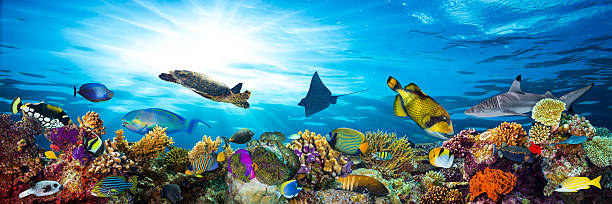Key Factors to Consider When Choosing Coral for Your Reef Tank
As a reef tank hobbyist, you know that selecting the right coral is crucial for creating a thriving underwater environment. With so many options to choose from, it can be challenging to find the varieties that will not only survive, but also enhance the beauty of your coral for reef tank. In this article, you’ll discover insider tips for picking corals based on your setup and goals. From fast-growing species that can handle beginner mistakes to showstoppers that will make your tank the talk of the reefing community, you’ll learn how to find the perfect corals to bring color, texture, and life to your reef tank. Equipped with this coral selection guide, you’ll gain the knowledge to curate a collection custom-fit for your tank and ambitions. Soon you’ll have a reef aquascape that looks like it was transplanted straight from the ocean floor.
The Top 10 Beginner Corals for Reef Tanks
When selecting coral for your reef tank, several key factors should guide your choices.
Lighting requirements
The amount and intensity of light a coral needs is critical to its health and growth. Corals like Acropora and Montipora require strong light and are best for advanced aquarists, while Mushroom and Xenia corals have lower light demands, suitable for beginners. Choose coral based on the lighting you can provide.
Flow and water movement
Most corals require moderate water flow and circulation to bring nutrients and oxygen. Make sure any coral you choose will thrive in the flow levels of your tank. Slower-flow soft corals may get damaged by the high flow favored by some stony corals.
Difficulty and care level
Some corals like Zoanthids and Green Star Polyps are very hardy and easy to care for, while others like Tubastrea and Dendrophyllia require more attention. As a beginner, choose easy corals so you can learn the basics before advancing to more difficult species.
Aggressiveness and growth
Fast-growing or aggressive corals like Xenia or Green Star Polyps can quickly overtake a tank. Slower-growing corals are better for mixed reef tanks as they are less likely to sting or out-compete other corals.
By considering these factors and choosing coral suited to your specific tank conditions and experience level, you’ll set yourself up for a thriving and successful reef tank. With regular care and maintenance, your corals should provide beauty and interest for years to come.
FAQs: Picking the Best Coral Varieties for a Thriving Reef Aquarium
As a new reef aquarist, it can be tempting to stock your tank with colorful and unique corals. However, some species require more advanced care and stable tank parameters. To ensure success, start with hardy, beginner-friendly corals that can thrive in a new tank.
1. Mushroom Corals: Mushroom corals, like green mushrooms and rhodactis mushrooms, are very hardy and low-maintenance. They come in a variety of colors and can reproduce quickly, adding color to your tank.
2. Zoanthids: Colorful zoanthid polyps, commonly called Zoas, are easy to care for and propagate readily. They come in a rainbow of hues like green, red, yellow and orange.
3. Leather Corals: Corals like toadstool leather and finger leather corals have soft, fleshy polyps and minimal lighting needs. They grow at a moderate pace and produce an interesting texture in your tank.
4. Star Polyps: Star polyps, also called feather dusters, have yellow polyps that extend from a mat-like base. They reproduce through spreading and require low to moderate lighting.
5. Pulsing Xenia: The pulsing xenia coral sways gently in the tank current, adding visual interest. It has low lighting needs and spreads rapidly, so you’ll want to leave space for its growth.
6. Green Star Polyps: Despite the name, green star polyps come in a variety of bright colors like red, purple and orange. They spread moderately and have low lighting requirements, making them ideal for beginners.
7. Candy Cane Coral: The candy cane coral features green polyps with pink or red tips that resemble candy canes. It grows at a moderate rate under low to medium light.
8. Hammer Coral: The hammer coral has distinctive hammer-shaped polyps. It reproduces by budding new heads and requires moderate light and flow.
9. Torch Coral: Torch corals have long, fiery red polyps. They extend day and night, adding height and color to the tank. Moderate light and water flow are needed.
10. Bubble Coral: Bubble coral has spherical bubbles that protrude from a hard base. It requires moderate lighting but minimal feeding and care. The bubbles come in shades of green, brown and tan.












